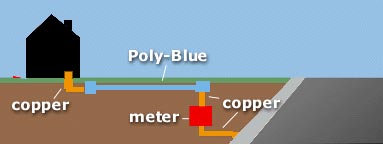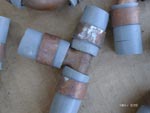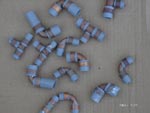 |
 |
|||||
|
||||||
| Mold | Molds can trigger asthma episodes in individuals with an allergic reaction to mold |
| Radon | Radon is a cancer-causing, radioactive gas. |
| Polybutylene Pipe | Polybutylene is a plastic like material known as a polymer |
| Asbestos | Asbestos is a mineral fiber. It can be positively identified only with a special type of microscope. There are several types of asbestos fibers. In the past, asbestos was added to a variety of products to strengthen them and to provide heat insulation and fire resistance. |
Radon is a cancer-causing, radioactive gas.
You can't see radon. And you can't smell it or taste it. But it may be a problem in your home. Radon is estimated to cause many thousands of deaths each year. That's because when you breathe air containing radon, you can get lung cancer. In fact, the Surgeon General has warned that radon is the second leading cause of lung cancer in the United States today. Only smoking causes more lung cancer deaths. If you smoke and your home has high radon levels, your risk of lung cancer is especially high.
Radon can be found all over the U.S.
Radon comes from the natural (radioactive) breakdown of uranium in soil, rock and water and gets into the air you breathe. Radon can be found all over the U.S. It can get into any type of building - homes, offices, and schools - and build up to high levels. But you and your family are most likely to get your greatest exposure at home. That's where you spend most of your time.
You should test for radon.
Testing is the only way to know if you and your family are at risk from radon. EPA and the Surgeon General recommend testing all homes below the third floor for radon. EPA also recommends testing in schools.
Testing is inexpensive and easy - it should only take a few minutes of your time. Millions of Americans have already tested their homes for radon.
You can fix a radon problem.
There are simple ways to fix a radon problem that aren't too costly. Even very high levels can be reduced to acceptable levels.
| If you have further questions about Radon, please call : | |
| Your Colorado Radon Contact:
Dept. of Public Health and Environment, |
The National Radon Information Line: 1-800-SOS-RADON |
| Or Call Elaine Ashby 800-262-1539 Ex 20
or Email Elaine Ashby |
|
| Visit the Radon information page for full "Radon Guide" | |





